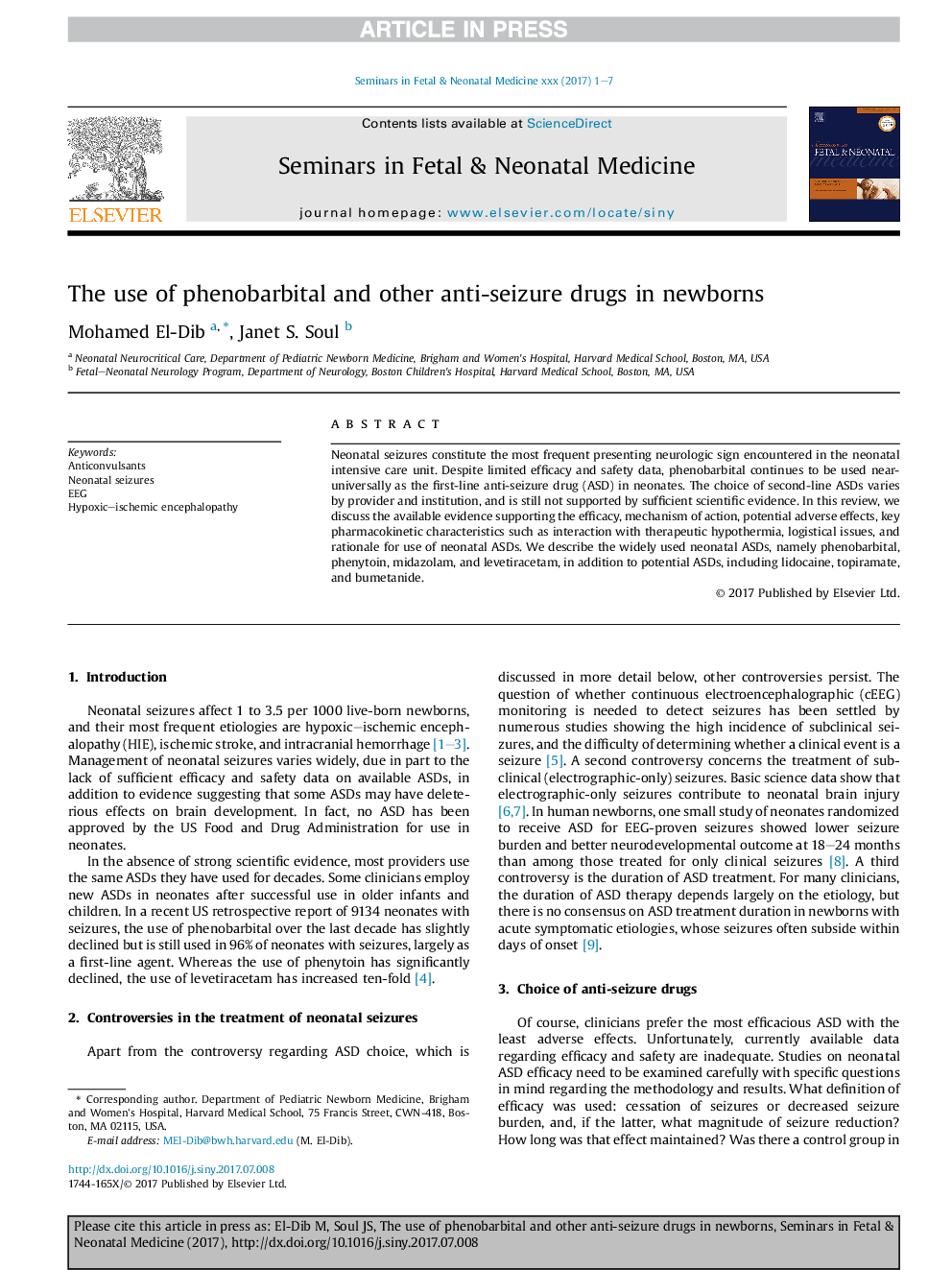| Article ID | Journal | Published Year | Pages | File Type |
|---|---|---|---|---|
| 5696873 | Seminars in Fetal and Neonatal Medicine | 2017 | 7 Pages |
Abstract
Neonatal seizures constitute the most frequent presenting neurologic sign encountered in the neonatal intensive care unit. Despite limited efficacy and safety data, phenobarbital continues to be used near-universally as the first-line anti-seizure drug (ASD) in neonates. The choice of second-line ASDs varies by provider and institution, and is still not supported by sufficient scientific evidence. In this review, we discuss the available evidence supporting the efficacy, mechanism of action, potential adverse effects, key pharmacokinetic characteristics such as interaction with therapeutic hypothermia, logistical issues, and rationale for use of neonatal ASDs. We describe the widely used neonatal ASDs, namely phenobarbital, phenytoin, midazolam, and levetiracetam, in addition to potential ASDs, including lidocaine, topiramate, and bumetanide.
Related Topics
Health Sciences
Medicine and Dentistry
Obstetrics, Gynecology and Women's Health
Authors
Mohamed El-Dib, Janet S. Soul,
